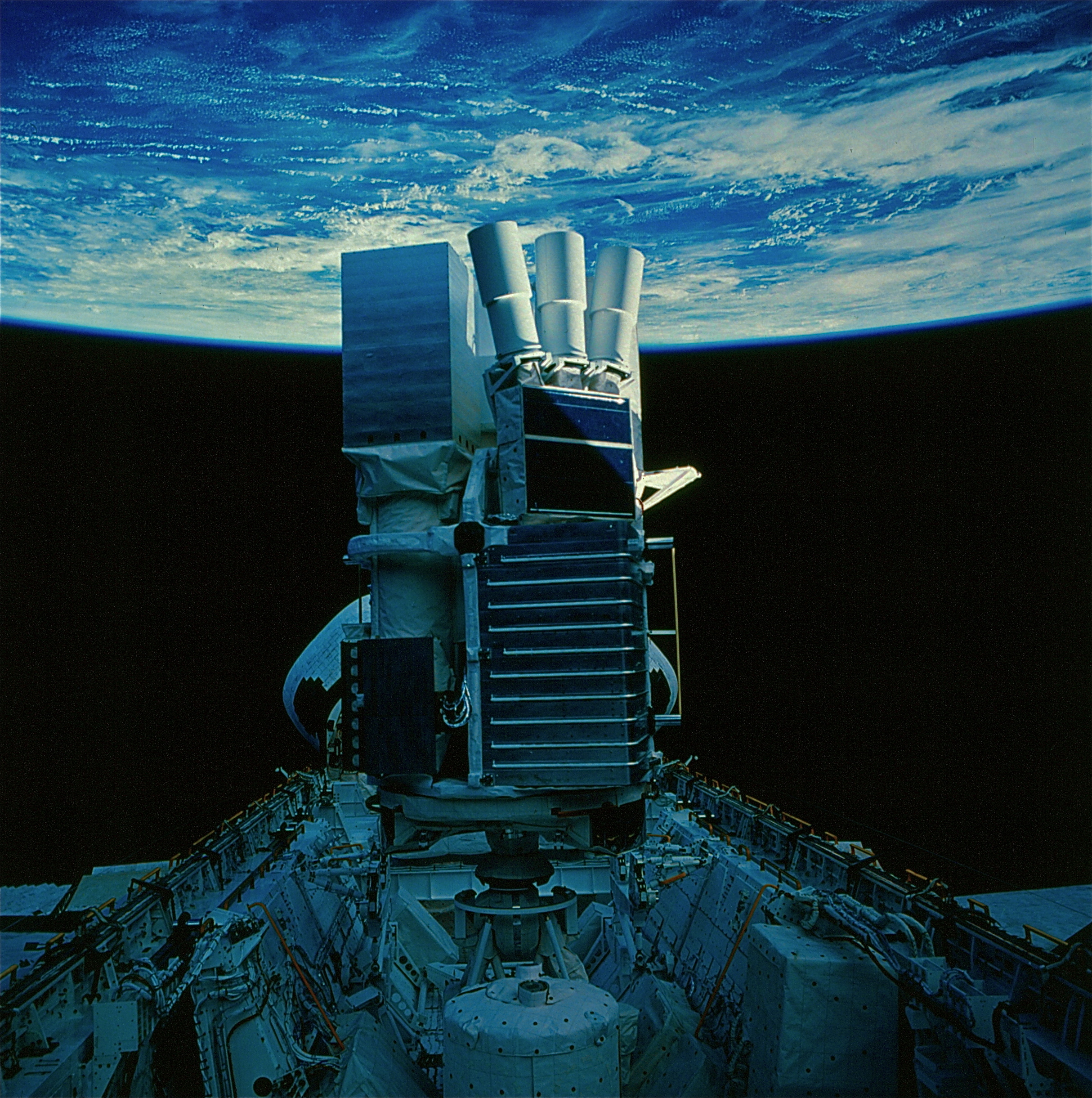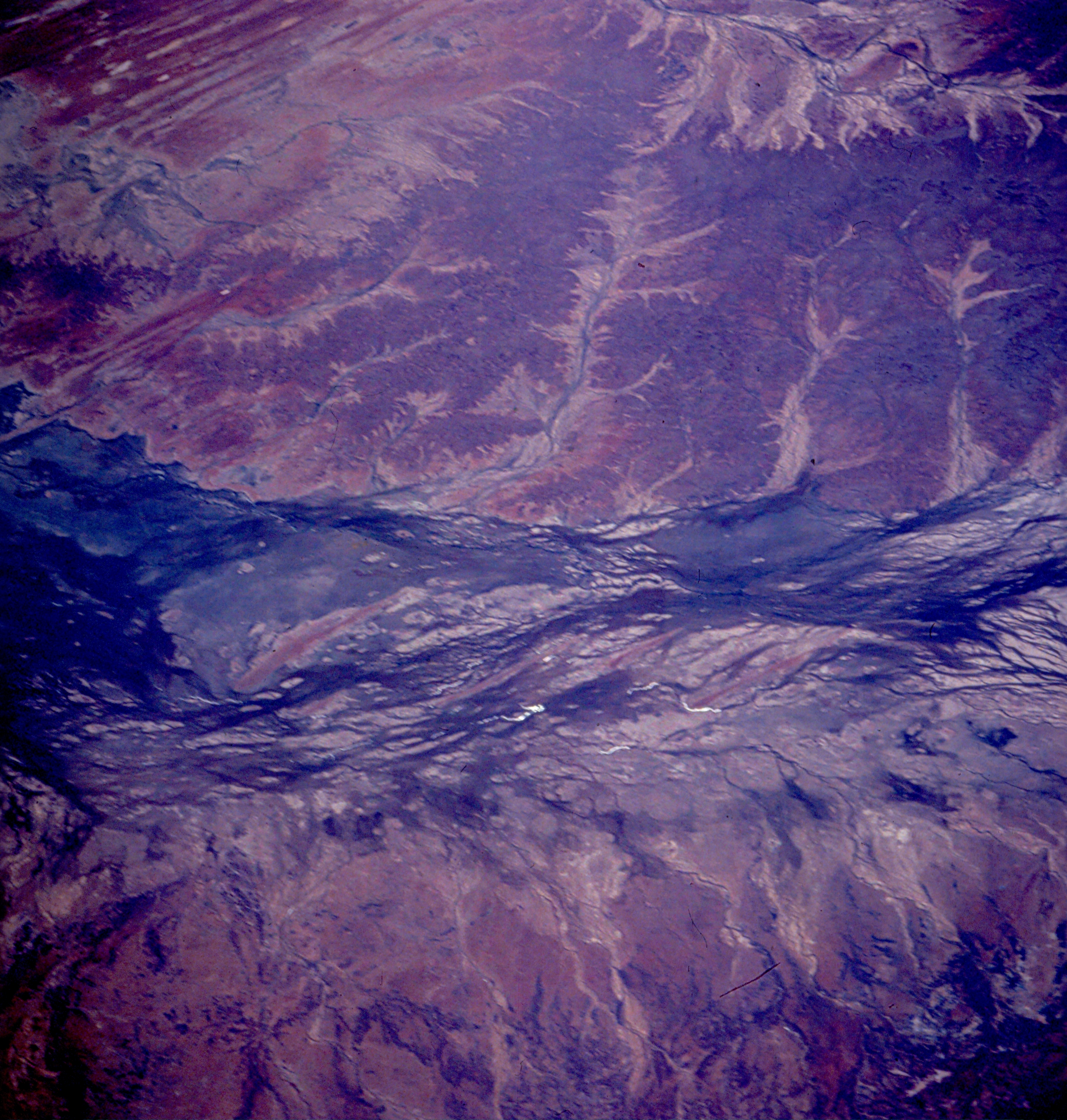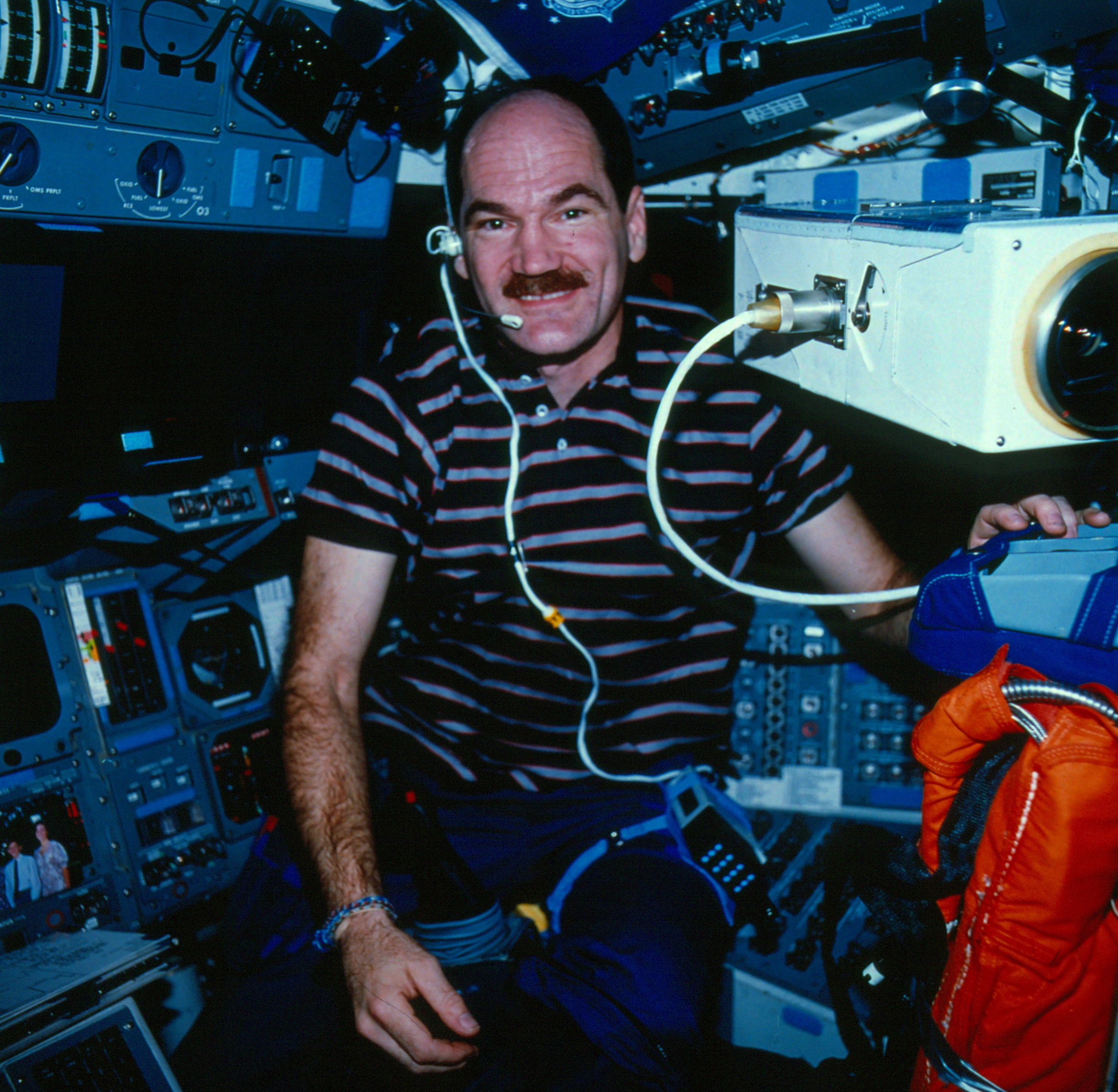Mission Overview
The ASTRO Observatory had three primary instruments: the Ultraviolet Imaging Telescope (UIT), the Hopkins Ultraviolet Telescope (HUT) and the Wisconsin Ultraviolet Photo-Polarimeter Experiment (WUPPE). The Astro Observatory was designed to use many of the spacelab components and flew on two different shuttle flights. The first was aboard the shuttle Columbia which also held the X-ray experiment Broad Band X-Ray Telescope (BBXRT). The second flight was aboard the shuttle Endeavour.
Active From
ASTRO-1: December 2 - 11, 1990
ASTRO-2: March 2 - 18, 1995
Capabilities
- Imaging
- Spectroscopy
- Polarimetry
On this Page
Instruments
ASTRO-1
Flight Crew
Shuttle Commander: Vance D. Brand
Shuttle Pilot: Guy S. Gardner
Mission Specialist 1: Jeffrey A. Hoffman
Mission Specialist 2: John M. Lounge
Mission Specialist 3: Robert A. Parker
Payload Specialist 1: Samuel T. Durrance
Payload Specialist 2: Ronald A. Parise
Alternate Payload Specialist: Ken Nordsieck
Accordion
-
Over 40 hours of observations on 77 different celestial targets were obtained with HUT during the Astro-1 mission. HUT was able to obtain spectra of key examples of almost every major class of astronomical object, ranging from distant galaxies and quasars to stars, star clusters, and clouds of gas and dust in our own Galaxy. Closer to home, HUT also observed familiar objects within our own solar system. When results from the other telescopes are added to those of HUT, it is clear that the Astro-1 mission was one of the most productive of all shuttle science missions to that time.
-
HUT scientists learned about conditions in the cores of active galaxies. These galaxies have unusually bright centers that may harbor massive black holes. As material falls into the black hole, it releases an enormous amount of energy that heats the surrounding gas clouds to high temperatures, producing bright ultraviolet emission. In one active galaxy, HUT observations found strong evidence for additional heating by shock waves. These and other data are being used to formulate a unified understanding of active galaxies. Evidence for the presence of massive black holes in quasars was also found.
-
Observations of the faint ultraviolet emissions in elliptical galaxies with HUT has shed new light on a 20-year old puzzle. These galaxies are composed almost entirely of old, cool stars which should not produce much ultraviolet light. HUT spectra characterized this faint UV glow at unprecedented levels and provided evidence for a new path of stellar evolution for old stars in these objects. Closer to home, HUT found new evidence for a hot, gaseous halo surrounding our own Milky Way Galaxy. A key absorption line found only in HUT's wavelength range shows this corona is several hundred thousand degrees hot and extends nearly 10,000 light years around the Galaxy.
-
HUT was used to observe a handful of binary star systems called cataclysmic variable stars, in which two stars are locked in very tight orbits about each other. (Check out this artistic conceptualization of a cataclysmic binary star.) Material from a normal star gets pulled off by the powerful gravitational attraction of the more massive star (a so-called white dwarf star), causing outbursts of intense UV light as the material falls onto the massive component. HUT observations provided new information about what happens in the hottest regions in these systems and found evidence for heating of the white dwarf by the infalling material. Astronomers also studied various diffuse nebulae in our Galaxy using HUT data. They learned about the characteristics of dust near hot stars, the speeds of shock waves produced by supernova explosions (check out this supernova remnant), and gathered information on the chemical composition of this tenuous material in interstellar space.
-
HUT was also used to study objects in our own solar system. Jupiter's moon Io, the most volcanically active body in the solar system, spews material into space, where it is ionized by collisions with other particles and caught up in Jupiter's strong magnetic field. HUT observations have permitted a better understanding of the temperatures and densities of the resulting plasma. HUT was even used to observe a comet, which got just far enough from the sun in time to be the last observation made on the mission.
ASTRO-2
Flight Crew
Shuttle Commander: Stephen S. Oswald
Shuttle Pilot: Lt. Col. William G. Gregory(USAF)
Flight Engineer: Lt. Cmdr. Wendy B. Lawrence(USN)
Payload Commander: Dr. Tamara Jernigan
Mission Specialist: Dr. John M. Grunsfeld
Mission Specialist: Dr. Samuel T. Durrance
Mission Specialist: Dr. Ronald A. Parise
Alternate Payload Specialist: Scott D. Vangen
Accordion
-
The HUT science team's highest priority science goal was to detect and measure the characteristics of the primordial intergalactic medium (IGM), a hypothesized gas thought to be spread throughout the Universe between the galaxies. The observation required involved multiple observations of a faint, high redshift quasar, using it as a "background" source to shine through the IGM; absorption of the quasars light at the "right" ultraviolet "colors" would indicate the presence of this elusive component of the Universe. To make a long story short, WE DID IT! Check out a more detailed discussion of this exciting result!
-
HUT was used to observe the active galaxy NGC 4151, which may harbor an obscured black hole in its nucleus. The object was known to be variable on weeks-to-months timescales, and it had also been observed during Astro-1, providing an important comparison. Nature cooperated: NGC 4151 was observed to be some five times brighter during Astro-2 than it was during Astro-1! A detailed comparison of the differences is allowing an unprecedented view of the structure of the region in close to the black hole. Time variability over periods as small as two days may also be present in the Astro-2 data.
-
During Astro-1, only one elliptical galaxy and one "galactic bulge" region of a spiral galaxy (thought to be similar to an elliptical galaxy in many regards) were observed sufficiently well to constrain models of the stars producing the faint UV light in these galaxies, and even this provided breakthroughs in our understanding. An initial HUT paper on this topic reports first results for SIX elliptical galaxies from Astro-2, which are used to confirm and extend the preliminary Astro-1 results.
-
These are the expanding gaseous nebulae created by supernova explosions, which often remain visible for tens of thousands of years. As these nebulae expand, they heat normally invisible regions of interstellar gas and cause them to glow. Hence, they provide new information not only about the stars that exploded but about the interstellar medium. Very few of these objects, however, are observable in ultraviolet light because of intervening absorption by dust and gas in the plane of our galaxy.
Early Astro-2 results have already reported new detections for two galactic supernova remnants. The remnant called "Puppis A" was detected throughout the HUT wavelength range, producing insight into a cosmic collision between the supernova blast wave and an interstellar cloud. Also, HUT was used to detect emission from a young remnant called SN 1006, so called because the supernova was observed by Chinese astronomers in 1006 A.D. This is a "young" supernova remnant and the HUT detection is the first UV observation of such a fast interstellar shock wave, estimated to be traveling at 3000 kilometers per second (close to 1900 miles per second!). Many other observations in this category are expected to provide new results as analysis continues.
-
Massive young stars and old, highly evolved low-mass stars are both much hotter than the majority of stars and consequently emit strongly at the far-UV wavelengths that can be studied with HUT. Several of the hottest young stars in in the nearby galaxies called the Magellanic Clouds were observed in order to determine their temperatures, masses and radii. In addition, HUT provides unique information on the "stellar winds" from these most massive of stars. Included in these observations was the current candidate for the most massive single star, at nearly 200 times the mass of our sun!
-
Certain cataclysmic variables undergo occasional outbursts in which their brightness increases by factors of 100 or more. The time between outbursts is not regular, but varies from two weeks to months or longer. The cause of these outbursts and their affects on the stars is poorly understood. On Astro-2, HUT scientists observed the dwarf nova U Geminorum 185 days after an outburst, which is the furthest away from outburst that the system has ever been observed. During Astro-1, HUT had observed this binary star just 10 days after an outburst. The comparison is very interesting, showing the clearest evidence yet that the white dwarf star not only gets heated during an outburst, but that this heating primarily affects only a portion of the white dwarf's surface. Many other cataclysmic variable observations are still being analyzed.
Mother nature also cooperated by supplying three bright novae in the month or so prior to the Astro-2 launch. These objects were still in their decline phase during the mission, and HUT observations of two objects have been reported, including a time sequence on one object. The HUT observations were used to determine the abundances of carbon, nitrogen, and oxygen in the expanding gaseous shells as well as the time variability of the emissions.
-
These objects are composed of two stars in the late stages of evolution orbiting each other at a distance similar to that of the Earth from the Sun. One star is a hot white dwarf which irradiates its cooler red giant companion. Astronomers made far-ultraviolet observations of several symbiotic stars with both HUT and WUPPE. They are studying the effect of the hot star's intense ultraviolet radiation on the outer layers and stellar wind of the red giant star. This is providing a unique perspective on the structure and evolution of red giant star atmospheres.
-
HUT scientists observed the Jovian system (Jupiter and its moons) for comparison with Astro-1 observations. This comparison will permit a better understanding of the importance of the changing solar input. (Astro-2 was near solar minimum, while Astro-1 was near solar maximum.) A coordinated observation of Jupiter's northern polar aurora between HUT and the Hubble Space Telescope will provide unique information on the physical processes and excitation mechanisms in the giant planet's atmosphere and magnetosphere.
HUT was also used to observe Venus and Mars. The atmospheres of these planets, although very different from one another in terms of density, are both dominated by carbon monoxide emissions. Comparison of the HUT observations will provide new insights into the atmospheres of our nearest planetary neighbors.




































